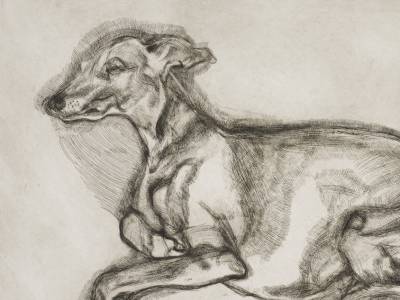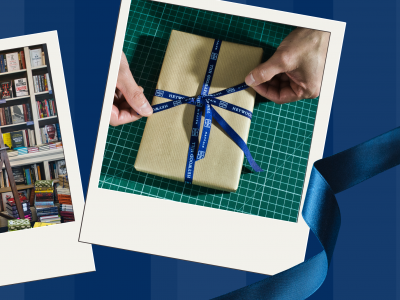Only occupying two rooms of the V&A’s Prints and Drawings section, this exhibition is small but effective. When entering a gallery, it sounds obvious, but finished items are commonly what is expected. What is seriously underappreciated is gaining insight into the process of the finished piece itself. Blurb on the walls does this to an extent, allowing visitors to learn the story of each piece. Seeing the process right in front of you, however, is completely different. For many exhibitions, this behind-the-scenes is never captured to share with audiences. More often than not, we are only left with the finished project and what we interpret it as. The rest can be a complete mystery to us, left decades or centuries in the past. It is when we take this fact into consideration, that we can see the intricate developmental process on display in this exhibition for what it is - a true rarity.
Lucian Freud's Etchings emblazon the walls of the V&A
8th February 2024
Lucian Freud's Etchings are currently gracing the walls of the V&A with their meticulous yet haunting beauty. Pippa Lowe shares highlights from this insightful exhibition as she explores the process of perfectionism behind the monochrome masterpieces that Freud and printer, Marc Balakjian, journeyed tirelessly to create. All the glorious 'mistakes' included.
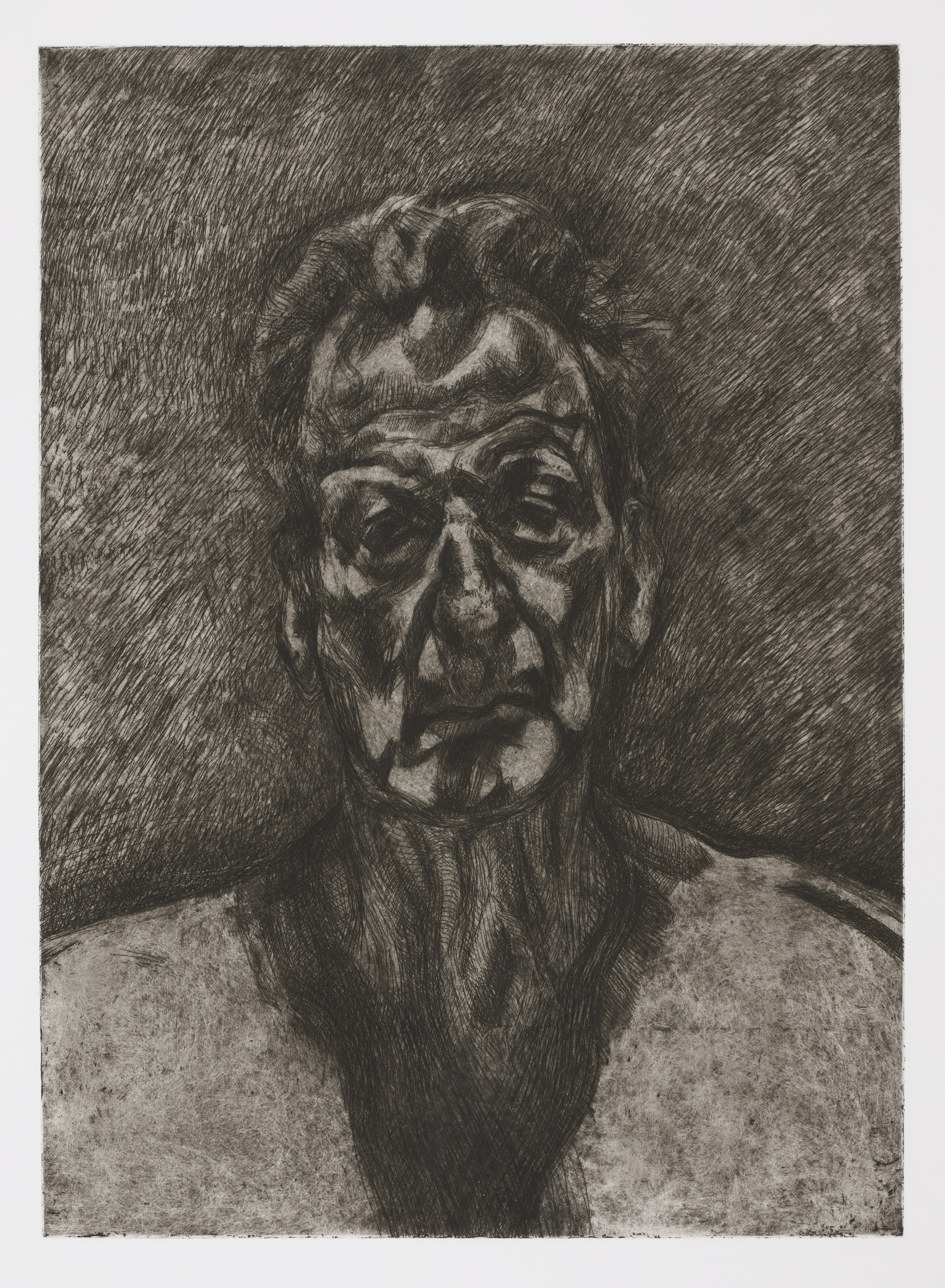
When entering a room lined with art, there is always a piece that will catch your attention immediately. It’s where your eyes glance to first. For me that was the trial proof of Freud’s Self Portrait: Reflection, paired next to the cancellation proof of the same image. To clear up any questions regarding printing terms: what actually is a trial proof and a cancellation proof? Before prints can be published, they go through a lengthy trial-and-error process with trial proofs. These are a practice run if you will, where the artist and printer can analyse where to make any necessary changes to the plate before printing again. If the artist is particularly unhappy with a print, they can cancel it so that the plate is not used again.
Throughout the exhibition, a few cancellation proofs are on display. There you can see where Freud has etched crosses with frustration into the plate to signify that it's no good. It’s fascinating to see a trial proof next to one from earlier in the process or besides a cancellation proof. Although the changes made are miniscule at times, the impact they have on the overall demeanour of the image is remarkable. A simple crosshatch adding increased coarseness and depth, can change an image entirely. Self Portrait: Reflection is already a rather ghoulish depiction of the artist himself, but he wanted it even darker – this is the main difference you can see between the proofs.
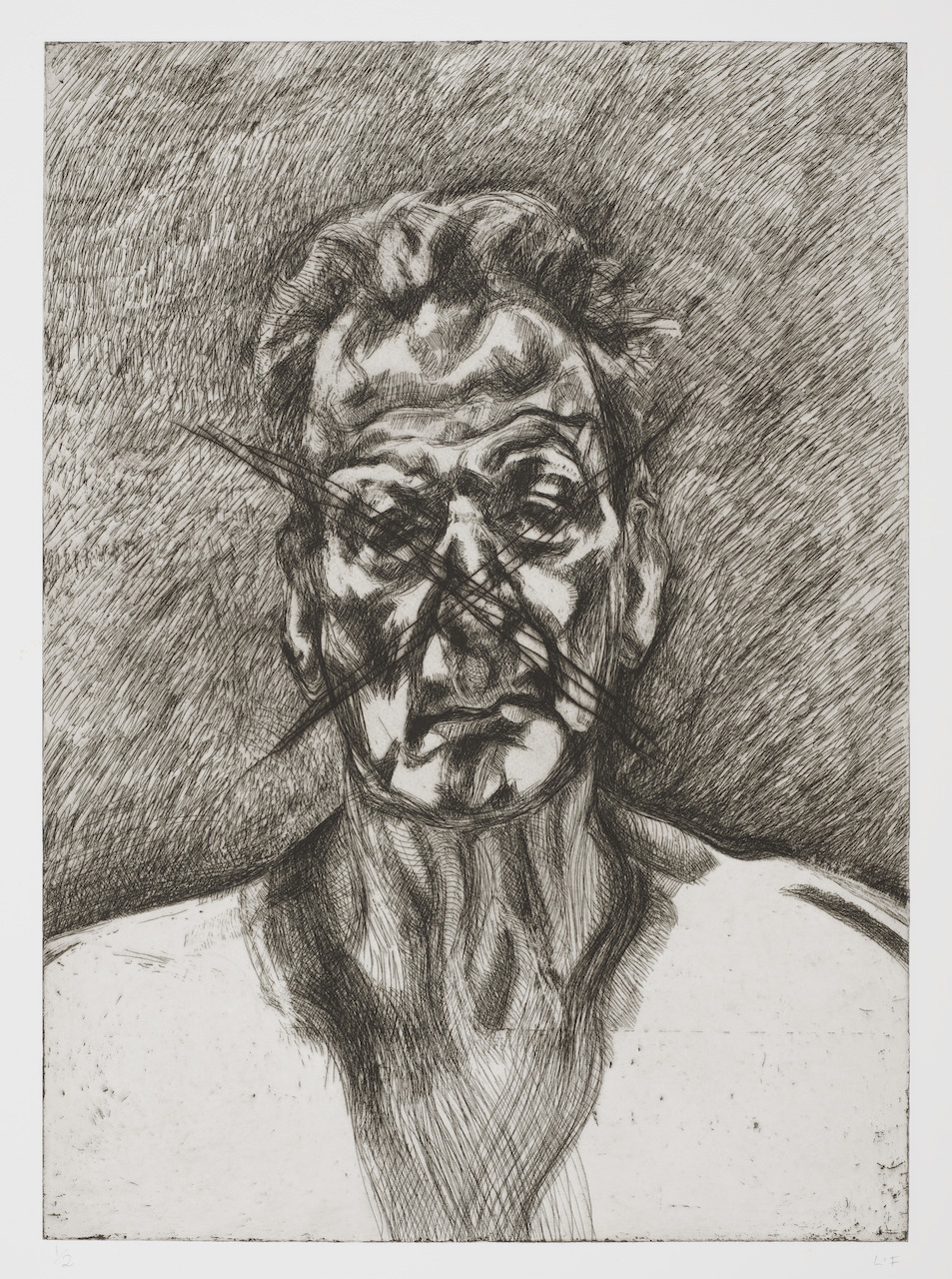
With some trial proofs, Freud used pastel to draw attention to areas of disapproval that he wanted to change. This is most prominent in the collection of Reclining Figure, where the V&A have acquired nine trial proofs. Here, some patches of the images are fully absent to focus on improving the print of the remainder of the image. The larger collections of trial proofs have been displayed alongside each other, where you can step back and visually see the images change as your eyes scan from left to right. Like slowly flicking through the pages of a flipbook.
As a fond lover of animals who owned dogs all his life, Freud based a number of his pieces around his two whippets: Pluto and Eli. A highlight of the exhibition is the trial proof etching of Pluto aged twelve, from the year 2000. Capturing the depth of Pluto's bony tendons and the character of his sheepish expression. When compared with the later trial proof displayed alongside, you see more noticeable edits. Such as the opening of Pluto's eye and the sudden appearance of his right ear poking from behind his head. The uniformly laid diagonal etchings encircling the perimeter of Pluto and the petting hand, give an animated illusion of movement to the print - an effect I find most prominent in this piece.
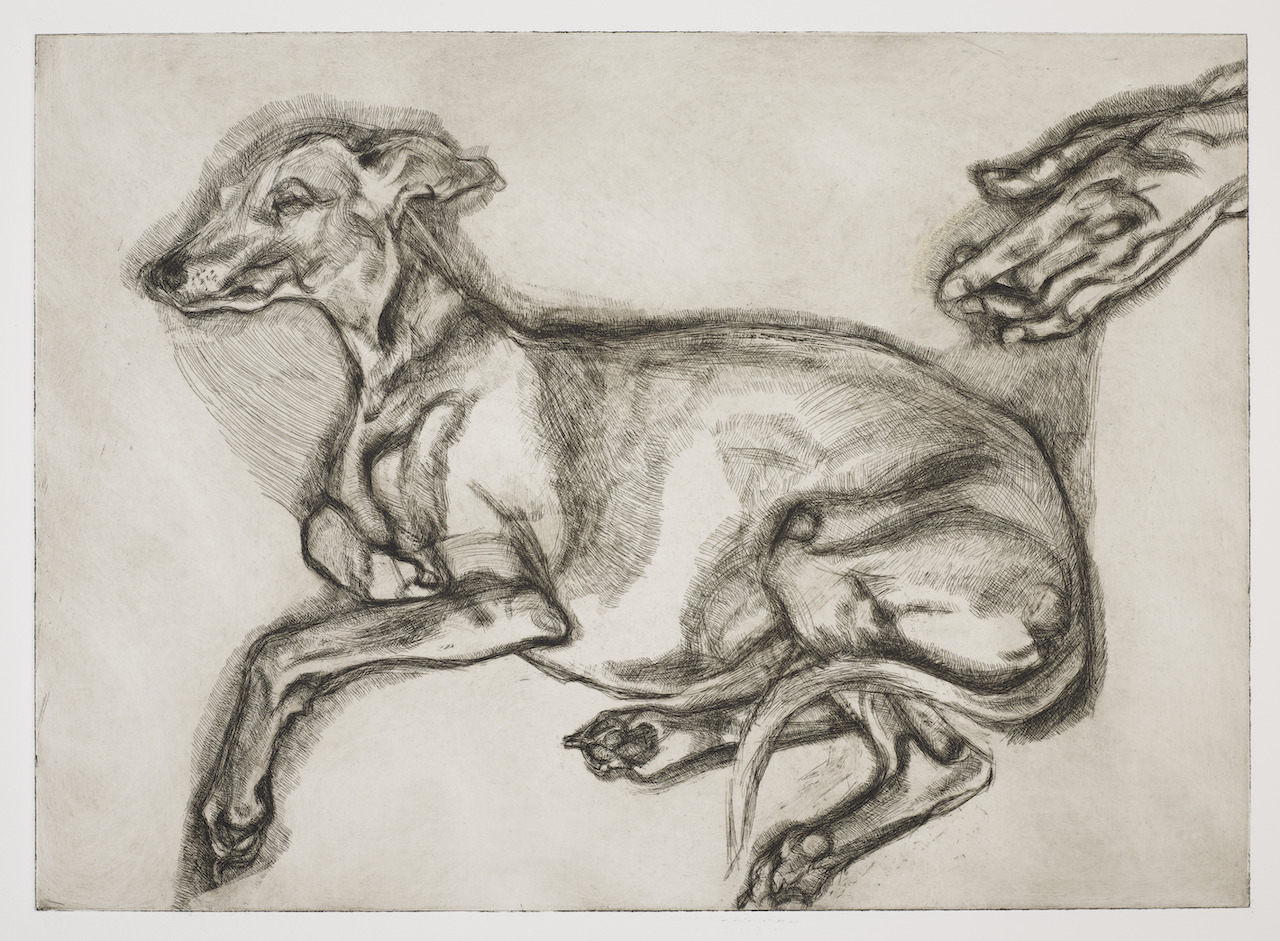
For long-standing Freud fanatics, a couple of pieces will seem familiar as they resemble similar compositions to known paintings from the artist. For example, Red Armchair by the Fireplace. A trial proof on display that Freud admitted he found disappointing and thought it just looked "illustrative" on paper compared to how it did on the plate.
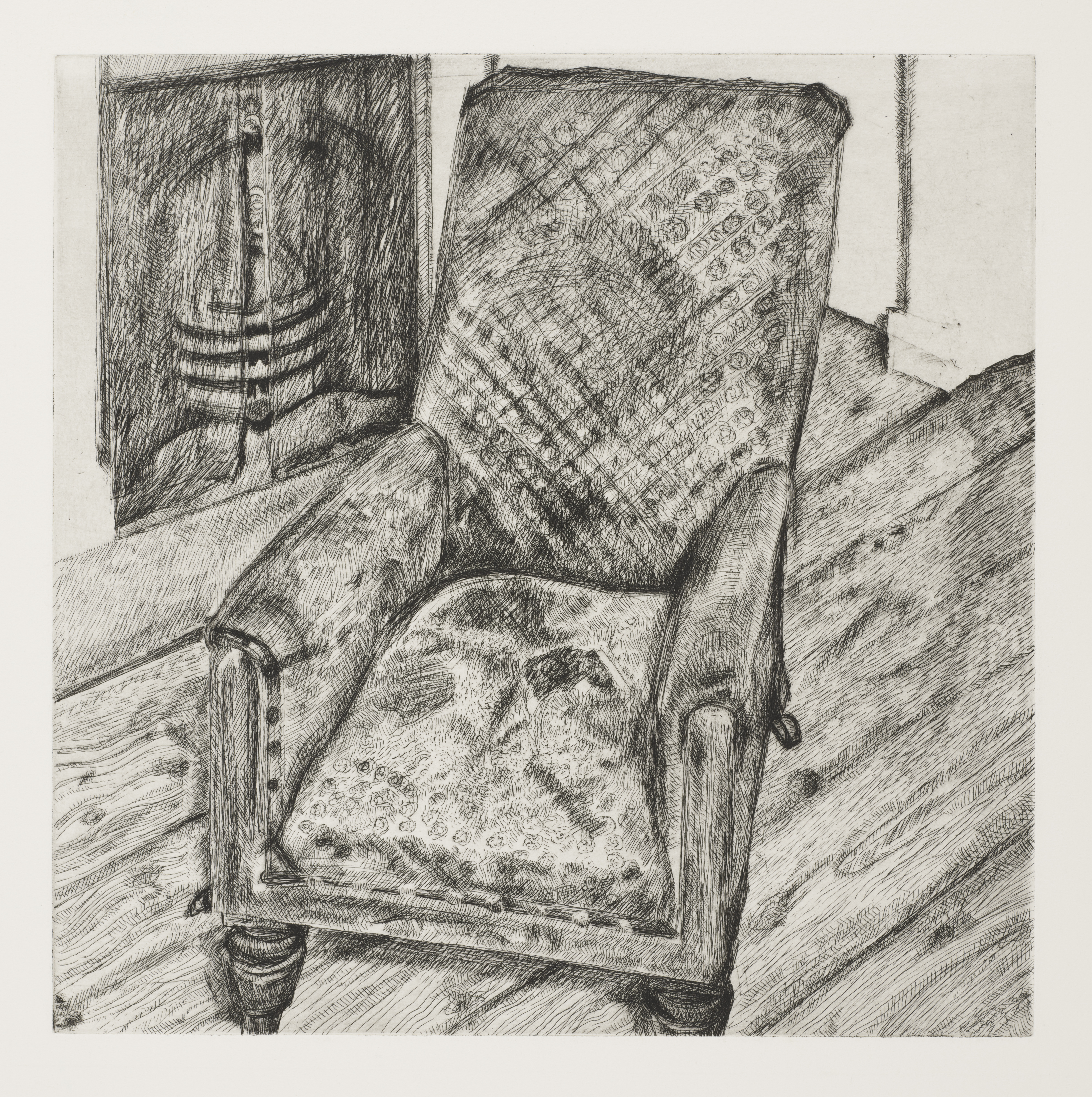
A series of trial proofs for After Constables Elm mirror a similar series of The Painters Garden across the second room. With these you can clearly see the gradient from light to dark, as depth floods the paper - proof by proof. The exposure to such a collection makes you feel committed to a process that you were never a part of. As you pace the room, stepping closer to what Freud and Balakjian deemed as complete. Despite the final pieces being so similar to what they were disappointed by. You come to realise that it is a very scrupulous and cyclical process, between artist and printer. Plate and paper.
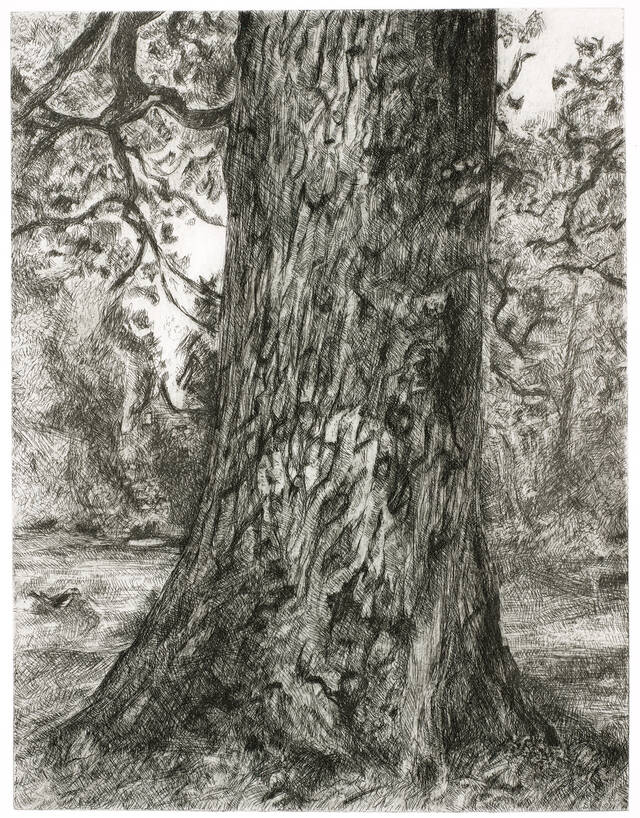
It’s a unique art, differing from any painting or drawing you could ever see. When looking at a painting, the retracing of the artist's movements is lost in a sea of layering and blending. When you step close to one of Freud’s etchings, you can see every overlapping line that makes the piece whole. Like tyre tracks in the snow leading to how they got to the destination. Stepping back, they morph into seamless shadows as your eyes refocus. Resembling what one would immediately interpret as works of charcoal or pencil, when it is much more.
Lucian Freud's Etchings: A Creative Collaboration is on display for free entry at the V&A South Kensington until 25th August 2024.
Learn more and plan your visit here.
